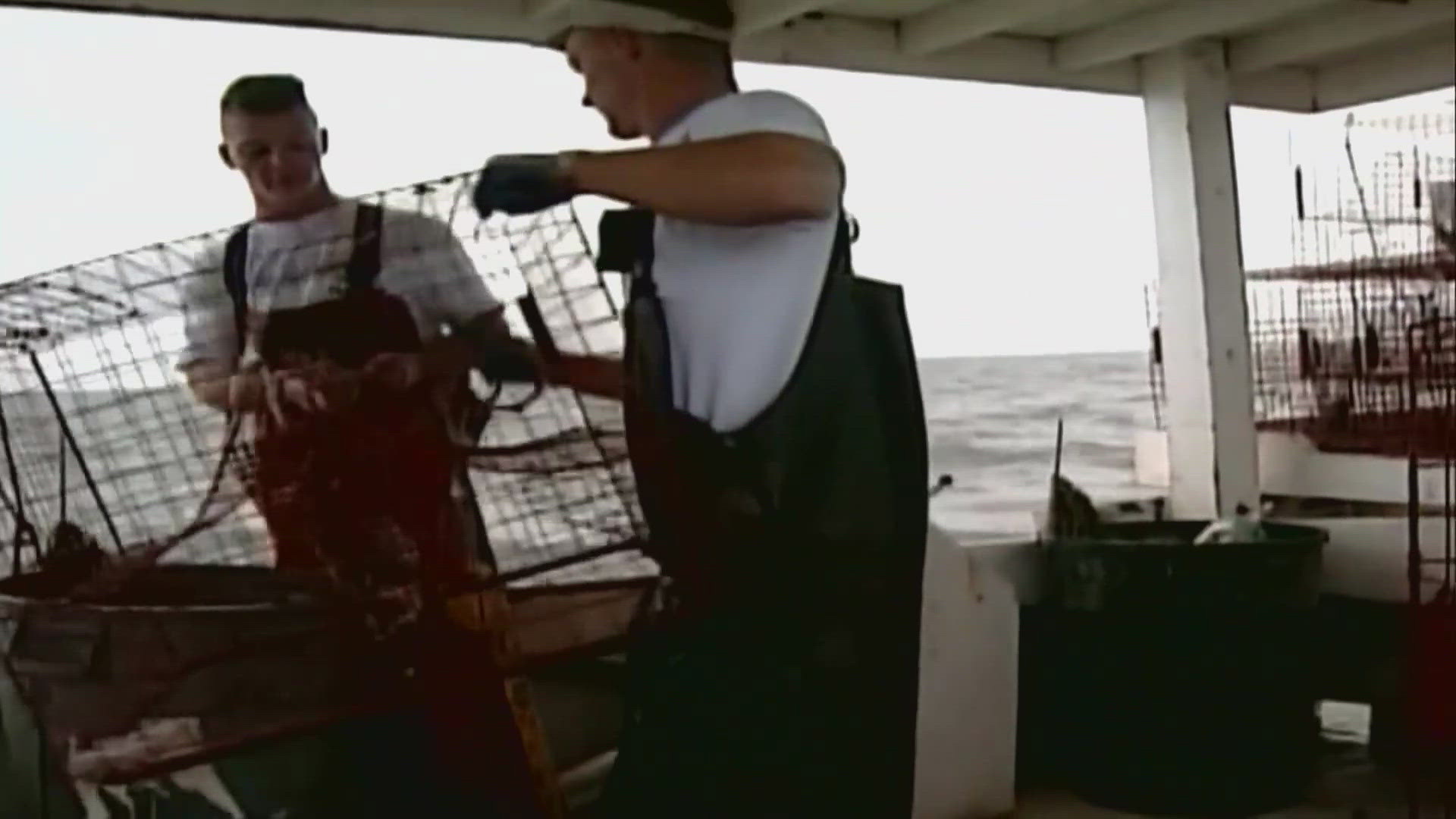ANNAPOLIS, Md. — Fallout from a controversial decision in Virginia to lift a 15-year ban on harvesting blue crabs in the winter with heavy dredges has amplified tensions between states about how to manage the Chesapeake Bay's most valuable commercial fishery.
The decision from the Virginia Marine Resources Commission in June shocked Maryland authorities.
Maryland Department of Natural Resources Secretary Josh Kurtz called the decision a “bad day if you care about blue crabs.”
“A decision of this magnitude should have only been made with the support of scientists, in close consultation with Maryland officials, and in response to a significant increase in the blue crab population,” Kurtz said at the time.
The next move comes in September, when the nine-member Virginia commission is set to decide how much winter dredging to allow and under what rules, now that the ban is lifted.
Commission members point out that it is possible no dredging will be permitted, depending on scientific data presented.
However, the elimination of the 2008 ban opens the door to the restarting of a past practice that many describe as an abuse of a resource shared by the two states. The Chesapeake Bay provides 30% of the crab caught in the U.S.
Opponents of winter dredge fishing in Virginia cite the crab's life-cycle.
Crabs migrate into Virginia waters during the winter and settle in the muddy bottom during the coldest period. This concentrates the population of female crabs in places where they are easy to scoop up with dredges scraping the muddy Virginia bottom.
Before the 2008 ban, the majority of crabs caught by winter dredging were females laden with eggs. They are scooped up in the winter before they have had a chance to spawn the next generation, and before they have a chance to migrate back into Maryland waters where an entire industry and culture is based on catching them in the summer.
Allison Colden, PhD, Maryland Director of the Chesapeake Bay Foundation, said data from before the ban is compelling.
"Ninety-six percent of their harvest is adult female crabs that are overwintering and have not yet had a chance to spawn, which means all of the eggs that they're carrying and are ready to spawn in the spring are taken along with them in that winter dredge fishery," Colden said.
"Overall on an annual basis, it was removing about 34% of all adult female crabs in the population."
Scientists have continued to survey crab populations using the winter dredge method. The survey catch remains primarily female crabs laden with eggs.
“The female crabs that are harvested in a winter fishery are primarily those crabs that have bedded down and are just sitting there waiting," Colden explained. "And all of a sudden a large dredge comes along, digs them out of their winter napping home and harvests them before they have a chance to wake up and become active in the summer.”
The history of the ban goes back to 2008 when the crab population was in big trouble. Maryland and Virginia agreed to cooperate on a winter dredging ban to bring numbers back up.
Last month, The Virginia Marine Resources Commission, who are residents appointed by the governor, voted to lift the ban in a 5-4 vote. The decision was against the advice of the professional biologists from state and federal agencies.
The supporters of reopening winter dredging said the few Virginia watermen expected to try dredging need the option to make more money in the winter.
Board Member AJ Erskine called the ban a “rubber stamp” that needed to be lifted so the possibility of winter harvest could be reviewed using modern data.
Erskine told WUSA9 that whether or not winter dredging will be allowed still depends on input from scientists, and he does not have a position on reopening dredging until the data is in.
The Commission will meet in September to set rules for the winter.
Populations of blue crabs in the Bay have ticked downward for the past five years, according to Colden.
Retail restaurant prices for a dozen crabs are as high as $95 in Maryland, reflecting the scarcity of blue crabs.

